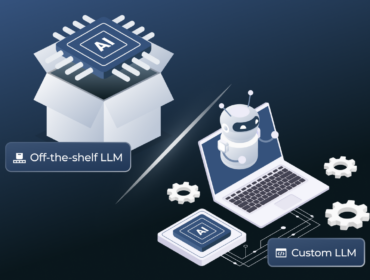NFTs are non-fungible tokens that are singular and unique by nature. They cannot be interchangeable like fungible cryptocurrencies such as BTC or Ether. But NFTs can be bought and sold like any other piece of property or work of art. The prices of NFTs can run into the millions, making them unattainable to most buyers.
For example, a single token on OpenSea costs $938.99, on CryptoPunks – $123,690, and on SuperRare – $7,940, on average. Fractional NFTs are a solution to the problem of high-priced NFTs as they deliver higher liquidity for assets and lower entry barriers for new investors. F-NFTs create new opportunities and new investment horizons, so let’s find out more about fractional NFTs.
What are fractional NFTs?
A fractional NFT (F-NFT) is an NFT that has been divided into smaller fractions and then sold separately. They are also referred to as fractionalized NFTs. If you buy an F-NFT, you become the owner of a small piece of an NFT along with its market value.
Yachts, luxurious property, cars, and famous works of art are worth thousands or millions of dollars, and all of them could be turned into NFTs and F-NFTs. The most famous example of an F-NFT is the famous Doge Meme. PleasrDAO bought it for a whopping $4 million in 2021 but later offered fractionalized ownership of the meme in $DOG tokens that users could buy even for $1.
How to fractionalize an NFT
There is no set number of parts you can divide an NFT into. It can be 1,000 and even a billion. It’s up to the NFT owner to decide how many pieces the NFT can be split into. Here’s the process to fractionalize an NFT:
- Define tokenomics and features of your project (e.g. whitelisting, buy out and governance rules)
- Decide how many parts you need to split the NFT into and calculate the price
- Develop a ERC-721, ERC-20 and operating smart contracts
- Audit the code of smart contracts and test it for vulnerabilities
- Mint an NFT as an ERC-721 token
- Deploy the operating smart contract
- Send an NFT to the smart contract to lock it
- The smart contract divides the token into a set number of ERC-20 tokens
- The NFT is represented by ERC-20 tokens that are sold at a fixed price
- Investors can now buy F-NFTs and resell them without affecting the value of the original token.
ERC-721 and ERC-20 are token standards for Ethereum, but you can use any other blockchain like Polygon, Solana, and Cardano for NFT fractionalization.
Where to use F-NFTs?
Art isn’t the only area where you can utilize F-NFTs. Here are some of the most popular use cases of F-NFTs:
- Real estate

NFTs are making their way into the real estate industry and speeding up the process of property buying in a trustless manner. NFTs and smart contracts allow for the faster, simpler, and safer transfer of ownership without intermediaries. F-NFTs allow for multiple parties to share a property’s ownership.
Yet, F-NFTs aren’t common for real estate, but they are believed to revolutionize the process of investing in real estate by making it more affordable.
- Metaverse
With the growing popularity of the metaverse concept, it’s attracting more and more investments. Decentraland and Sandbox are already pioneering the metaverse world. With F-NFTs, a group of investors or individuals can come together to invest in virtual lands or any other virtual asset in a metaverse.
- Gaming
A wide range of Play-to-Earn crypto games allow users to buy, sell, and own in-game assets, some of which are NFTs. But some NFTs are too expensive for an average player. F-NFTs allow players to come together and invest in expensive in-game assets.
F-NFTs have already entered the field of gaming. Axie Infinity is already giving F-NFTs a try by fractionalizing rare Axies.
Top three reasons to fractionalize NFTs
The introduction of F-NFTs has made the technology more popular and allows more people to jump onto the bandwagon by investing in the new industry. F-NFTs offer multiple benefits to a wide range of industries, but here are the top three reasons why F-NFTs are an important part of the new decentralized financial system.
- Quick price estimation
It’s hard to estimate the price of a newly created NFT. With F-NFTs, owners can easily estimate the market value of unique tokens. NFTs are divided into multiple parts and released into the market, where users can bid on and buy them.
As an NFT increases in price, the value of its parts also goes up. When an NFT drops in price, the fractions lose their value.
- Higher asset liquidity
Costly NFTs are often associated with lower liquidity, and F-NFTs can easily overcome this perception. If you are looking to sell a very expensive item, you may be waiting a long time for an investor to come along who can afford it. But having divided it into fractions, you can make your asset more attractive to investors and resolve the liquidity problem.
- Curator rewards
NFT owners who fractionalize their assets can receive a curator reward from an NFT marketplace. It opens a new extra channel of passive income for creators and NFT owners.
Challenges of F-NFTs
F-NFTs have their own disadvantages like everything else. Here’s what you need to know before investing in F-NFTs:
- Reconstitution of NFTs

Though selling expensive NFTs in fractions is highly profitable for owners, problems arise when they need to reassemble all the pieces. The only way to recreate an NFT is to buy back all the sold fractions. But what if owners refuse to sell them back? Particular fractionalization protocols offer the means to acquire all the fractions to recreate an NFT.
- Buyout actions
Similar to regular actions, buyout actions represent a way to solve the reconstitution problem. When fractionalizing an NFT, the owner sets the minimum price for the NFT when it’s sold at an auction. So any interested party needs to bid equal or higher to purchase the NFT.
The owners of F-NFTs can keep their fractions if they want, but they still need to outbid the interested party. If they fail, all the fractions come together to reconstitute the NFT. Then, the NFT can be transferred to the buyer. Buyout actions are allowed for price discovery and help increase the overall value of an NFT.
- Legal issues
In many cases, this type of NFT ownership is not clearly outlined in the legislation, and projects and users have a hard time figuring out how SEC or other authorities will deal with this ownership. So for now, fractional ownership is only valid in certain territories where relevant legislation is in place. The success of fractional NFTs in allowing investors to reap benefits from real-world assets also depends on whether regulations operate in tandem. For example, dissonance will occur if fractional NFTs and traditional title deeds pose competing legal claims to real-world assets like real estate.
Summing up
Fractional NFTs present new opportunities for ordinary people to dive into the world of NFTs and enhance the liquidity of assets. They have emerged as a response to expensive blue-chip NFTs that burden the flow of new investors.
NFT fractionalization opens the market and promises to power up the next wave of decentralized finance. As there is no sign of NFTs’ popularity slowing down, we can expect more interesting blockchain innovations in the near future.
With Unicsoft, you can be among the first to ride the wave of the NFT revolution. Our experienced developers cover the full spectrum of blockchain development services, including NFT marketplace development, DeFi platform development, DeFi smart contracts, and more. Contact us today for a consultation.





![How Fractional NFTs Work and What Makes Them Important What’s the EU Artificial Intelligence Act and How to Comply? [Webinar]](https://unicsoft.com/wp-content/uploads/2024/03/Cover_1140_v1.1-370x280.png)

